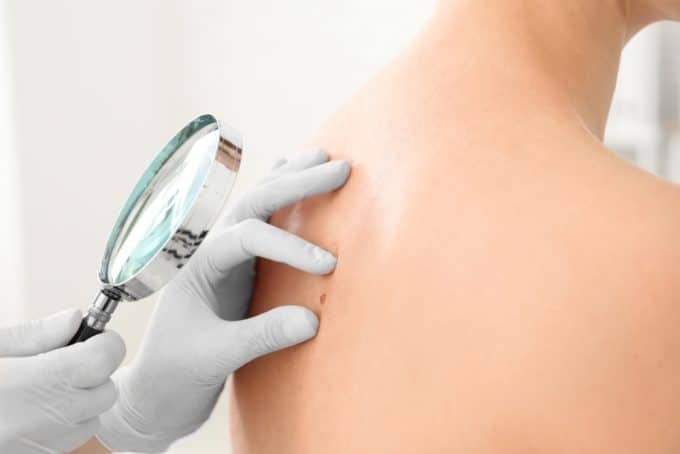Skin Cancer Treatment Options

Skin cancer is the most common cancer in the world and it affects millions in the US alone. Although avoiding sun exposure and tanning beds can help prevent skin cancer, other factors can contribute to your risks. Fortunately, it is easy to diagnose skin cancer even in its earliest stages. The earlier it is detected, the easier it is to cure successfully. This is why it is important to stay educated about the many causes of skin cancer, its development, and ways to prevent it.
Skin cancer diagnosis
When you book a consultation with Dr. Baird in Farmington, MI, for your skin cancer diagnosis, we will patiently listen to you and answer any questions you may have about the condition. There are three common types of skin cancer – Squamous cell carcinoma, basal cell carcinoma, and melanoma. Dr. Baird begins your diagnosis with a full body check and examines your skin for any unusual growths or moles. In case a precancerous or cancerous growth are suspected, then a skin biopsy is conducted. Either a shave biopsy or an excision is typically used.
The growth is then examined under a microscope to determine if it is cancerous and the severity of the condition. The size, depth and location of the growth are also studied. These factors allow us to choose the best treatment for your skin cancer.
Treatments for skin cancer
- Skin biopsy – Superficial skin cancers can be usually removed with the initial skin biopsy itself.
- Excisional surgery – This is a simple procedure where Dr. Baird will numb the area first before removing the cancerous tissue with a scalpel along with surrounding tissue so that all harmful cells can be removed.
- Cryotherapy – After removal of the growth, cryotherapy can be used for removing the excess remaining cancer cells. The layers of cancer cells are scraped away and at times, liquid nitrogen is also used for freezing the cells. Since it is less invasive than the traditional surgical procedure, it helps reduce pain, bleeding, as well as recovery time.
- Mohs surgery – This is a precise surgical technique where thin layers of cancer cells are progressively removed. Each layer is examined under the microscope for cancer cells until only cancer free tissue is remaining. This is an improvement on the excision surgery where a small margin of healthy tissue is also removed with the visible cancer.
- Photodynamic Therapy (PDT) – Photodynamic therapy is a treatment, which uses special drugs known as photosensitizing agents in addition to light in order to kill cancerous cells. The drug works when activated by certain types of light. Depending on the part of the body being treated, the photosensitizing agent is either put on the skin or into the bloodstream through a vein. In time, the drug is absorbed by the cancer cells and then light is applied to the treatment area. The drug reacts with oxygen in the presence of light forming a chemical which kills the cells.
After a surgical excision, Dr. Baird also performs closure and reconstruction as well. The goal remains to close your wounds without affecting your aesthetic appearance.
If you notice a new or changing mole or growth on your skin, contact our office right away for a proper diagnosis. Most moles are completely harmless, but it’s always best to get a professional opinion from Dr. Baird to determine if treatment is necessary.

